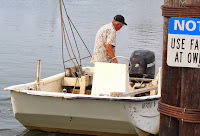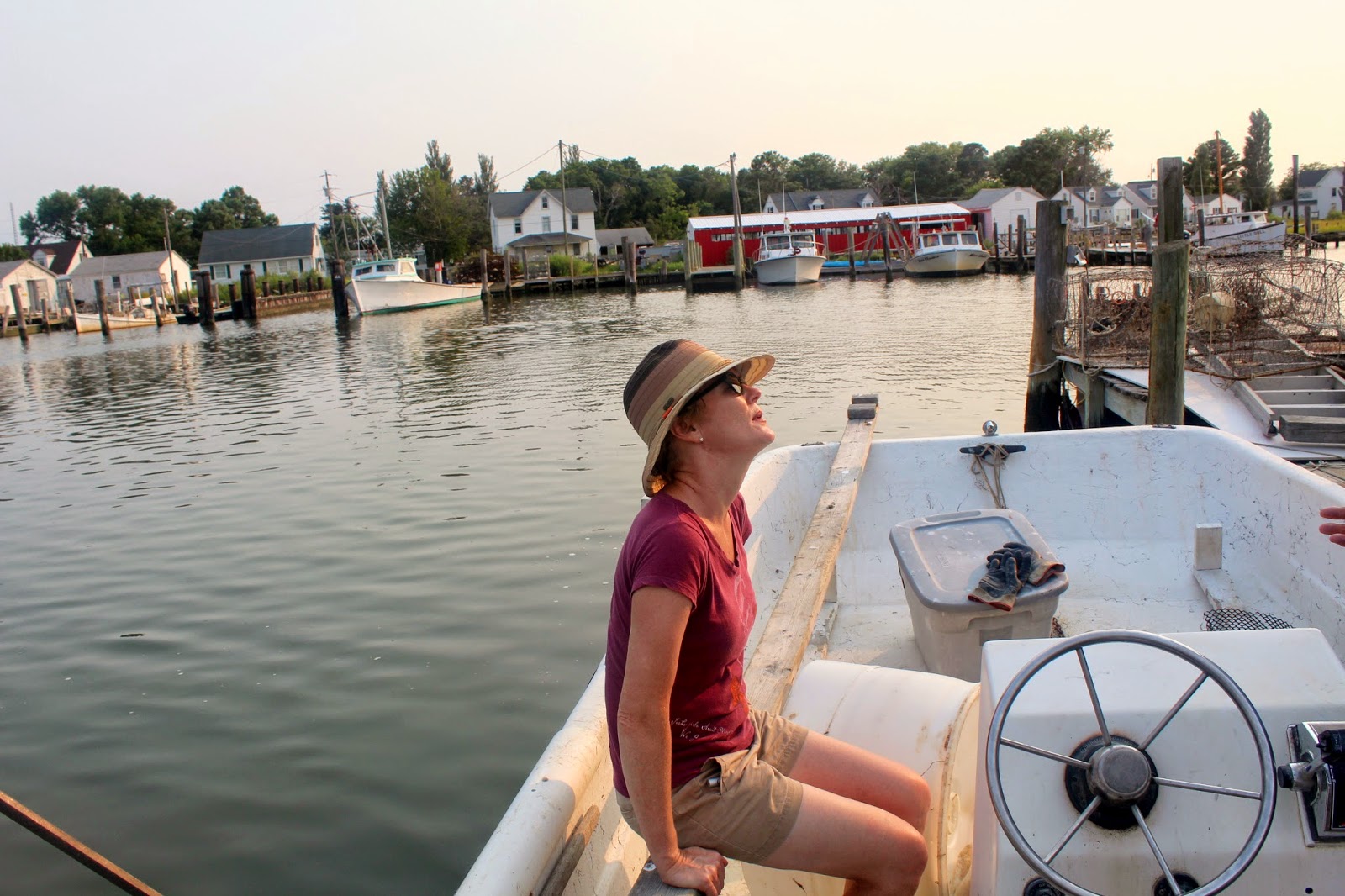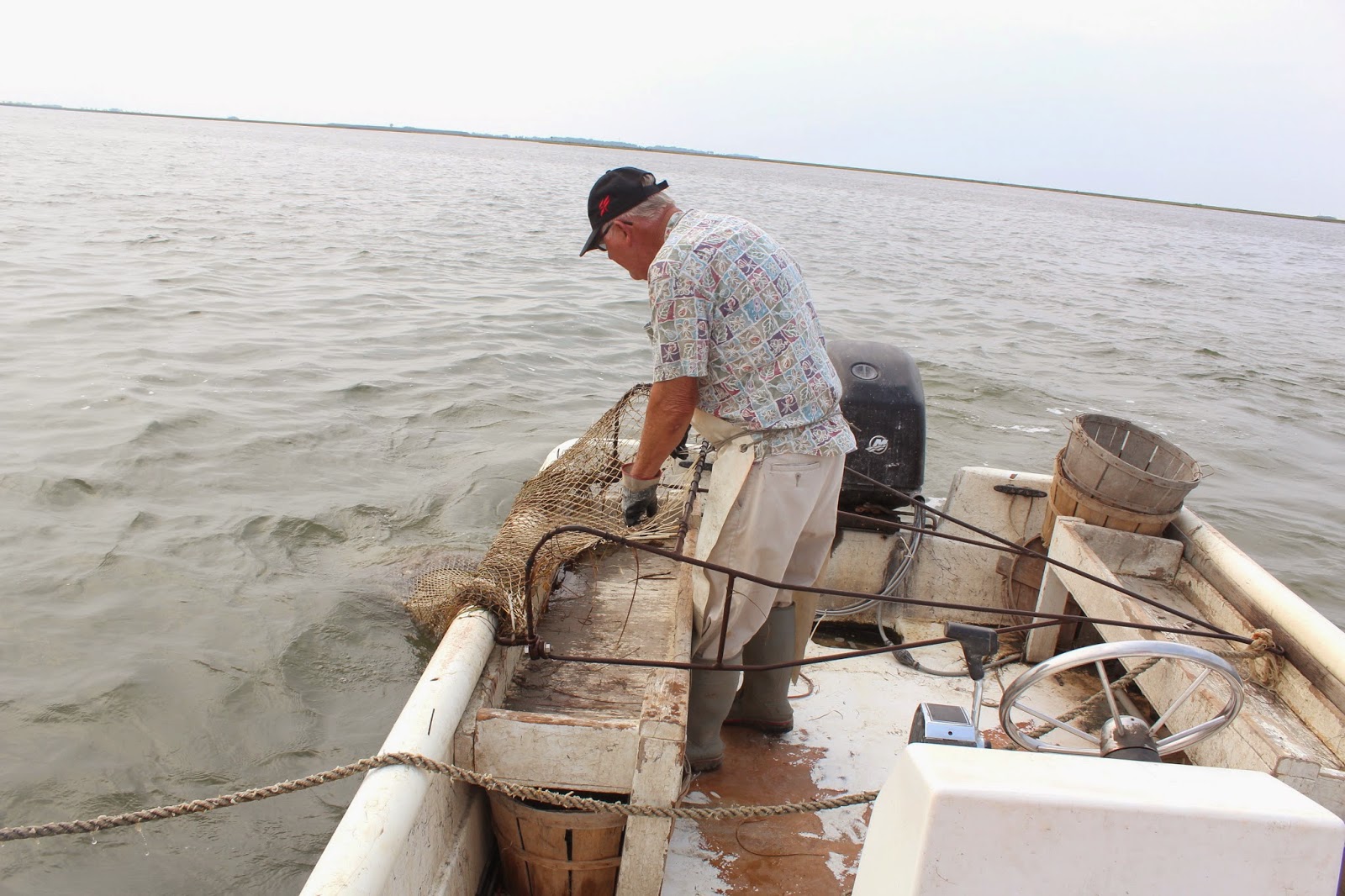- Crabbing - How the little crustaceans are raked from the muddy water bed, graded by size and quality on the boat and further graded in crab sheds that have a constant flow of marsh water).
- Bird Watching - See and photograph the many birds that live in and around Smith Island (egrets, snowy egrets, brown pelicans, herons, blue herons, ducks, turkeys, bald eagles, swans, osprey, cormorants, and dozens more)
- Pelican Island - The turn around of the nearly extinct brown pelican's mirrors that of the blue bird. In both cases, bird lovers cared enough to spend years bringing them back to health numbers. Barry has taken many to the island to band and study the brown pelican.
- Tylerton - It is a remote, water locked town on Smith Island with approximately 60 residents. As with other parts of Smith Island, possible activities enjoy enjoying the natural beauty and walking, biking, canoeing, kayaking, bird watching, and thinking. Barry took us through his crab shack. It was a mini factory with dozens of tubs that had a constant supply of fresh marsh water. Crabs filled most of the tubs. He explained to us the quality control process for determining what crabs were selected for market and which went back to the marsh or died and were discarded. He divided the crabs that went to market into the following categories: whales, jumbos, primes, hotels, and mediums.



 Barry Bruce is a Waterman and Tour Guide in Ewell, Smith Island, Maryland (410 425 3181. As he says on his business card, "See the waters and way of life of the Waterman culture. Create memories that last on Smith Island, MD."
Barry Bruce is a Waterman and Tour Guide in Ewell, Smith Island, Maryland (410 425 3181. As he says on his business card, "See the waters and way of life of the Waterman culture. Create memories that last on Smith Island, MD."  He was kind enough to allow my wife and I to observe him separating quality market bound crabs from substandard crabs in his crab shack. He also took us out to his crab pot locations where we watched his 73-year old body rake the mud, pull up crabs, separate the good ones from the bad ones, sort them into bins, and then clean up his work space. He did so at a speed and with a muscular work effort that would put 20-something to shame.He offers four water tours off Smith Island.
He was kind enough to allow my wife and I to observe him separating quality market bound crabs from substandard crabs in his crab shack. He also took us out to his crab pot locations where we watched his 73-year old body rake the mud, pull up crabs, separate the good ones from the bad ones, sort them into bins, and then clean up his work space. He did so at a speed and with a muscular work effort that would put 20-something to shame.He offers four water tours off Smith Island.



He showed us examples of how the blue crabs were sluffing, or molting from its hard shell and becoming a soft shell crab, his trade craft and the biggest industry on the island.
 He wakes at 3 a.m, is on the water at 3:30 a.m. pulling up crabs until midday. He rests a bit, eats lunch, and returns to crabbing in the afternoon. At evening, he hauls his crabs to his crab shed for processing and sorting and then returns to the same tasks the next day.
He wakes at 3 a.m, is on the water at 3:30 a.m. pulling up crabs until midday. He rests a bit, eats lunch, and returns to crabbing in the afternoon. At evening, he hauls his crabs to his crab shed for processing and sorting and then returns to the same tasks the next day.
 He wakes at 3 a.m, is on the water at 3:30 a.m. pulling up crabs until midday. He rests a bit, eats lunch, and returns to crabbing in the afternoon. At evening, he hauls his crabs to his crab shed for processing and sorting and then returns to the same tasks the next day.
He wakes at 3 a.m, is on the water at 3:30 a.m. pulling up crabs until midday. He rests a bit, eats lunch, and returns to crabbing in the afternoon. At evening, he hauls his crabs to his crab shed for processing and sorting and then returns to the same tasks the next day.
Barry is a very, very hardworking guy. He said that seven yeas ago, after having everyone at the Methodist Church lay hands on him, he went and had both knees replaced. And he still goes out every day before dawn and does the back breaking work of bring crabs out of the mud to some ones dinner table.
He was an outstanding tour guide with a deep knowledge crabbing, the people of the island, including authors, who have lived there.
It's a unique experience and one that may not be around for many years, so take advantage of it while there are still Waterman crabbing these waters. A look at these photos of him working will give you a fair idea of what he does. What they do not convey is his wealth of knowledge of the crabbing life, industry, Smith Island, people who have come and gone on that small island and marshland, and his depth of knowledge of the Chesapeake Bay ecology.
A look at these photos of him working will give you a fair idea of what he does. What they do not convey is his wealth of knowledge of the crabbing life, industry, Smith Island, people who have come and gone on that small island and marshland, and his depth of knowledge of the Chesapeake Bay ecology.
For that, you should schedule a tour with him.
We did, and are the better for it.

























 Call him and take a working tour of the waters around Smith Island. I got to cut netting and staple it to the crab shack to keep out the egrets who eat the crabs in the wooden bins. I also got to see an incredibly hard working 73-year old drag up crabs in iron and netting from the marsh floor.
Call him and take a working tour of the waters around Smith Island. I got to cut netting and staple it to the crab shack to keep out the egrets who eat the crabs in the wooden bins. I also got to see an incredibly hard working 73-year old drag up crabs in iron and netting from the marsh floor. 


































































